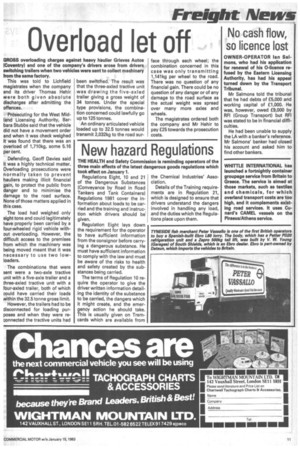Overload let off
Page 13

If you've noticed an error in this article please click here to report it so we can fix it.
GROSS overloading charges against heavy haulier Grieves Autos (Coventry) and one of the company's drivers arose from drivers switching trailers when two vehicles were sent to collect machinery from the same factory.
This was told to Lichfield magistrates when the company and its driver Thomas Hehir were both given absolute discharges after admitting the offences.
Prosecuting for the West Midland Licensing Authority, Barbara Stubbs said that the vehicle did not have a movement order and when it was check weighed it was found that there was an overload of 1,710kg, some 5.16 per cent.
Defending, Geoff Davies said it was a highly technical matter. Overloading prosecutions were normally taken to prevent hauliers making illicit financial gain, to protect the public from danger and to minimise the damage to the road surface. None of those matters applied in this case.
The load had weighed only Bight tons and could legitimately have properly been carried by a four-wheeled rigid vehicle without overloading. However, the difficult access to the premises from which the machinery was being moved meant that it was necessary to use two lowloaders.
The combinations that were sent were a two-axle tractive unit with a five-axle trailer and a three-axled tractive unit with a Four-axled trailer, both of which could have carried their loads within the 32.5 tonne gross limit.
However, the trailers had to be disconnected for loading purposes and when they were reconnected the tractive units had been switched. The result was that the three-axled tractive unit was drawing the five-axied trailer giving a gross weight of 34 tonnes. Under the special type provisions, the combination concerned could lawfully go up to 125 tonnes.
An ordinary articulated vehicle loaded up to 32.5 tonnes would transmit 2,032kg to the road sur
face through each wheel; the combination concerned in this case was only transmitting 1,141kg per wheel to the road. There was no question of any financial gain. There could be no question of any danger or of any damage to the road surface as the actual weight was spread over many more axles and wheels.
The magistrates ordered both the company and Mr Hehir to pay £25 towards the prosecution costs.








































































































